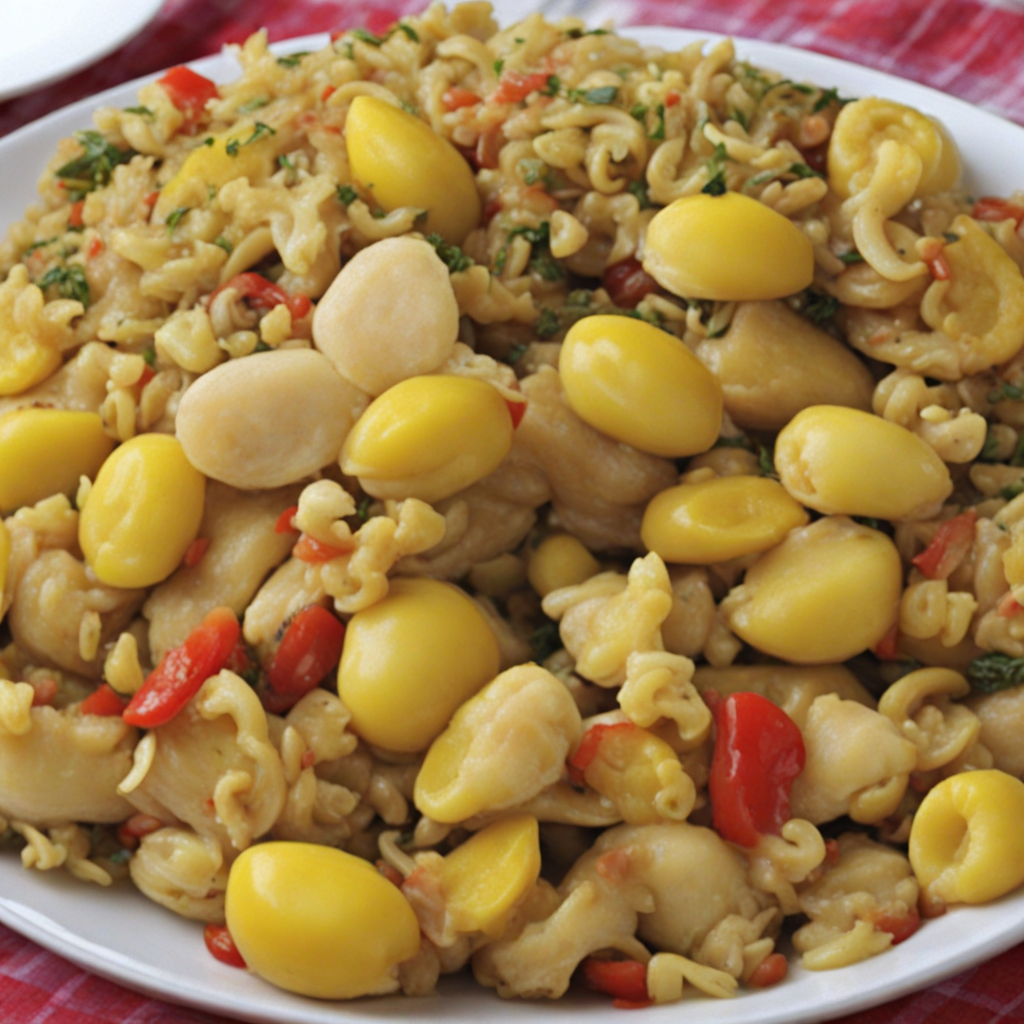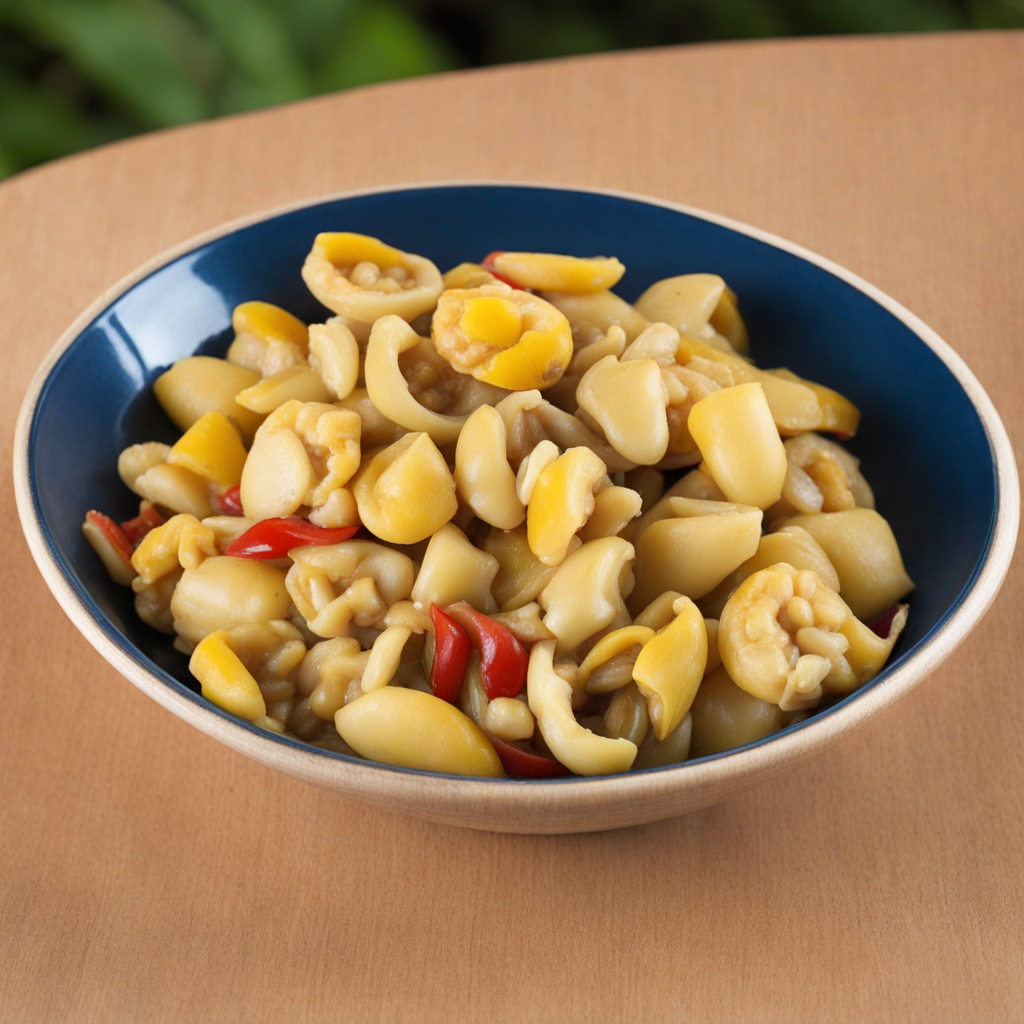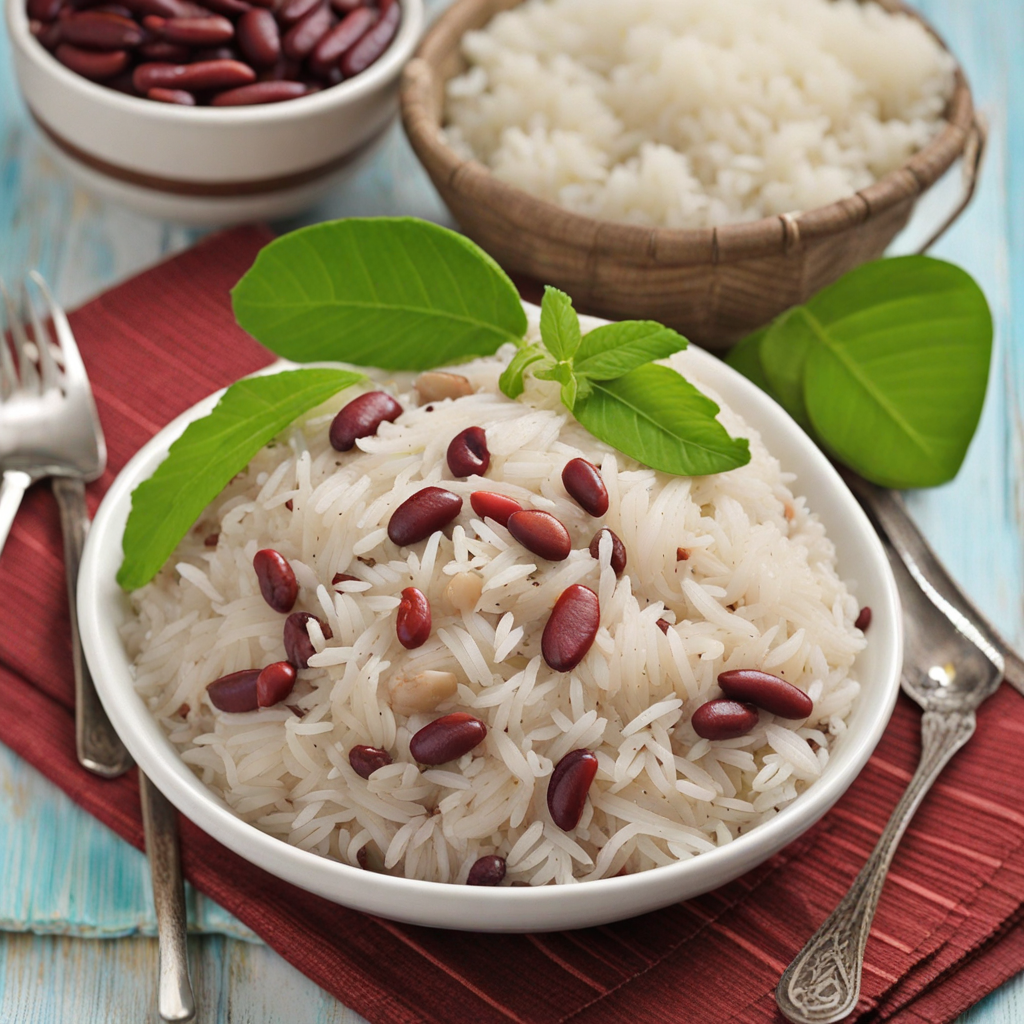Ackee and Saltfish
Ackee and Saltfish is a vibrant and savory dish that embodies the essence of Jamaican cuisine. The star of the dish, ackee, is a unique fruit that, when cooked, has a creamy texture and a subtle, buttery flavor. It is often compared to scrambled eggs in appearance and provides a beautiful yellow hue to the dish. The saltfish, typically made from salted cod, adds a rich, slightly briny flavor that perfectly complements the mildness of the ackee. Together, they create a harmonious blend that is both satisfying and delightful on the palate. To prepare Ackee and Saltfish, the saltfish is first soaked to remove excess salt, then boiled and flaked. The ackee is cooked separately until tender and combined with the fish, alongside a medley of aromatics such as onions, tomatoes, and bell peppers. The dish is traditionally seasoned with spices such as black pepper, thyme, and Scotch bonnet peppers, which introduce a subtle heat and depth of flavor. This combination of ingredients results in a dish that is not only hearty but also bursting with layers of taste and texture. Ackee and Saltfish is often served as a breakfast dish, accompanied by fried plantains, dumplings, or rice, making it a versatile meal suitable for any time of day. Each bite offers a celebration of Jamaican culture, showcasing the island's love for bold flavors and fresh ingredients. Whether you are enjoying it at a local eatery or preparing it at home, Ackee and Saltfish promises an unforgettable culinary experience that invites you to savor the unique tastes of Jamaica.
How It Became This Dish
Origins of Ackee and Saltfish Ackee and Saltfish is a beloved dish that serves as a national symbol of Jamaica, embodying the island's rich culinary heritage. The dish's primary components—ackee and saltfish—each have distinct origins. Ackee (Blighia sapida) is native to West Africa and was brought to Jamaica in the 18th century, likely as part of the transatlantic slave trade. The fruit thrives in Jamaica's tropical climate, and its vibrant yellow flesh is both nutritious and visually appealing. Saltfish, on the other hand, has European roots. Preserved by salting, this method was historically essential for prolonging the shelf-life of fish before refrigeration became commonplace. It is believed that saltfish came to Jamaica through British colonial influences, as sailors and traders in the Caribbean relied on salted cod as a staple food resource. The combination of these two ingredients—ackee and saltfish—created a dish that not only utilized local resources but also reflected the island's complex history of cultural exchange. \n\n Cultural Significance Ackee and Saltfish is more than just a meal; it is a cultural emblem of Jamaica and a source of national pride. The dish is often featured as a breakfast staple, enjoyed by locals and visitors alike. Traditionally, it is served with sides such as fried plantains, dumplings, or boiled green bananas, which enhance its flavors and nutritional value. The preparation of this dish is a ritual that brings families together, fostering community and connection through shared meals. Over the years, Ackee and Saltfish has transcended its humble beginnings to become a global ambassador of Jamaican cuisine. It represents the island's ability to blend African and European culinary traditions, showcasing the resilience and creativity of its people. The dish is frequently served at celebrations and festivals, reinforcing its status as a symbol of Jamaican identity and culture. \n\n Development Over Time The evolution of Ackee and Saltfish reflects broader socio-economic changes in Jamaica. In the early 20th century, the dish was primarily associated with the working class, as it was a practical meal that could be made with readily available ingredients. As the Jamaican economy began to grow and tourism expanded, Ackee and Saltfish gained prominence in restaurants and hotels, catering to an international clientele. The 1970s marked a significant turning point for Jamaican cuisine, including Ackee and Saltfish. During this time, the Rastafarian movement rose in prominence, emphasizing a return to roots and a deeper appreciation for local foods. Rastafarians often incorporated Ackee and Saltfish into their diets, promoting it as a wholesome and natural dish. This cultural revival helped to elevate the dish's status, allowing it to be embraced not only by locals but also by an international audience eager to experience authentic Jamaican flavors. \n\n Preparation and Ingredients The preparation of Ackee and Saltfish is an art form that requires skill and patience. The ackee fruit must be harvested at the right time; it opens naturally when ripe, revealing its creamy flesh and black seeds. Unripe ackee is toxic and must be avoided, making knowledge of the fruit's ripeness essential for safe consumption. Once harvested, the ackee is boiled until tender, while the saltfish is soaked in water to remove excess salt and then boiled or sautéed. Traditionally, the dish is cooked by sautéing onions, garlic, and tomatoes, followed by the addition of the saltfish, which is flaked into large pieces. The boiled ackee is then gently folded into the mixture, ensuring that it retains its delicate texture. Seasonings such as black pepper, thyme, and Scotch bonnet peppers add layers of flavor, resulting in a colorful and fragrant dish. \n\n Global Influence As Jamaican cuisine has gained international recognition, Ackee and Saltfish has become a staple in Caribbean restaurants across the globe. The dish's unique combination of flavors and textures appeals to a wide audience, making it a popular choice for those seeking to explore new culinary experiences. Over time, various adaptations have emerged, with chefs incorporating different ingredients or cooking methods to suit local palates while retaining the essence of the original dish. In the United States, for instance, Ackee and Saltfish is often paired with rice and peas or served as part of a larger Caribbean meal. This adaptive approach allows the dish to reach new audiences while remaining true to its Jamaican roots. The dish has also found its way into popular culture, appearing in various media, from cookbooks to music, further solidifying its position as a symbol of Jamaican heritage. \n\n Conclusion Ackee and Saltfish is a dish steeped in history, culture, and tradition. Its origins reflect the complex interplay of different cultures that have shaped Jamaica's culinary landscape. As it continues to evolve and adapt, Ackee and Saltfish remains a beloved representation of the island's rich heritage. This dish serves not only as a testament to Jamaica's history but also as an enduring symbol of resilience, creativity, and community, bringing people together through the joy of food.
You may like
Discover local flavors from Jamaica







